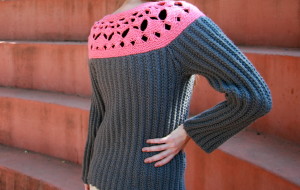
-
- Pseudo code is not just for computer programmers – actually I don’t know if programmers call it that anymore, but if I write what I need to do to make my thing, turn that into comments, then turn my comments into properly worded instructions, life gets smoother. For instance; if I have to let my project sit, it’s easier to get back into with comments. This works for de-bugging too, “Oh, that’s what I meant to say!” “Pattern Writing for Knit Designers,” by Kate Atherley gave me permission to use this process – why I needed permission I don’t know!
- I can also turn pseudo code into the big picture, terse, traditional instructions with all repeats and stitch count numbers, then write the longer, specific, new style instructions with marker notation, row numbers, and stitch counts. (giving both sorts of instructions is OK, more permission from Kate Atherley.)
- It felt like I had to be able to write both sorts of instructions from the get go, but of course, increments are fine. Why wouldn’t increments be fine?

-
- Keep using the spreadsheet for graded numbers (of course) but make sure that the concatenation formula is actually formatted properly! I had a lot of (space)(commas) to fix, and they all stemmed from the SAME formatting goof! In editing, it was easier to go through and fix them than to fix the spreadsheet, I make my pdfs in LaTexa, not a WYSIWYG program, so I can’t link my text to my spreadsheet for automatic updates.
- While I’m on the spreadsheet, make some size labels formatted in the proper form – so often I have to write those, “Size -(32, 36, -, -, -) continue on with …..” and they are a bear to type.

- I really like the way marker notation instructions flow, but I can’t seem to write them without a huge chart to stare at to see how patterns flow. And this part gets iterative too: sometimes as I’m writing the instructions, I see how shifting stitches a few repeats or parts of repeats would simplify shaping instructions, and that makes me have to change the chart and re-write past sections. Maybe on the next project, I can imagine my way through all the steps and strategize the easiest configuration from the get go? Of course, there is nothing wrong with iterations!
- It’s easier if all the similar shaping sections have the same starting spot in stitch patterns so I can use the same text.
- Search and replace for words and abbreviations.
- Search and replace for (space)(comma).
And do all the search and replacing BEFORE sending it to the tech editor!
